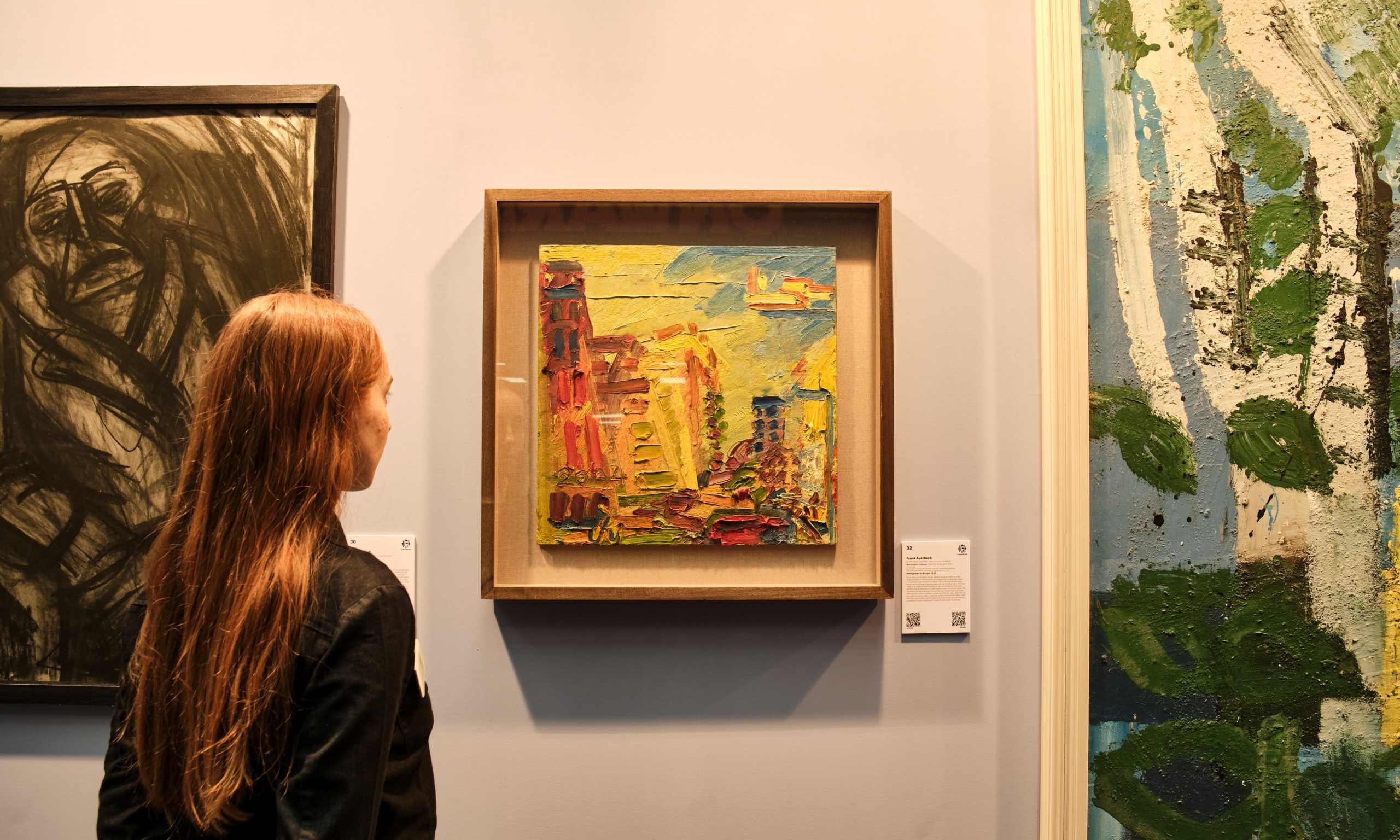Ben Uri Gallery and Museum's stand at London Art Fair 2022. Photo: Mark Cocksedge
There was clear relief from gallerists as London Art Fair opened to busy crowds, just weeks after the announcement that fellow London-based fairs, Masterpiece and the summer edition of Olympia, had been cancelled.
The 35th edition of the fair, which focuses on Modern and Contemporary art and is held at Islington’s Business Design Centre (until 22 January), was as pleasantly scaled and presented as ever. More than 100 galleries took part and a splattering of red dots throughout stands confirmed that sales were underway, if not frenzied. Dealers were also pleased with the level and quality of collectors at the VIP event, with a strong international turnout reported and rumours of a "billionaire Japanese collector" circulating.
A promising start in rocky times
“This is one of the few art fairs to really focus on Modern British art and it does it well,” says Mark Goodman, a director of the Johannesburg- and London-based Goodman gallery, which sold a Lynn Chadwick’s Conjunction XII for over £100,000 and a David Hockney Paper Pool for a similar price. “The reality is that with the lockdown, Brexit and the growing costs of import, the domestic market is still healthy and there’s still space for a quality fair with a very broad price range.”
Indeed, works available ranged from £250 to £250,000 from all the familiar names which buyers have come to expect from the event, including Henry Moore (a sculpture of whose sold for £40,000 at Thomas Spencer Fine art) and Keith Vaughan (whose painting sold for £100,000 at Osborne Samuel Gallery). Also promising was a sell-out booth from the London-based Elizabeth Xi Bauer gallery.
“London Art Fair is very clear on its clientele and purpose, so it seems to be faring better in this climate,” says Sally Kalman, of the London-based Crane Kalman Gallery, which specialises in 20th-century European and American works and was also a regular exhibitor at Masterpiece. Tanya Baxter, of the eponymous gallery, agrees: “I feel like the prices are without frills, and that there are good deals among the trade and to collectors.” Her stand made multiple sales including works by William Scott and Pip Todd-Warmoth of Varanasi.
Away from sales, the fair’s partnership with the London-based Ben Uri Gallery and Museum was clearly making an impression, with its display of work by Jewish and immigrant communities, including Ghetto Theatre, (1920) by David Bomberg, Mornington Crescent (2004), by Frank Auerbach and the thought-provoking The Hand Made Map of the World, 2013, by Dominica-born artist, Tam Joseph. “The reasons behind migration will be different for individuals and communities, but the actual experience when arriving are very much the same,” says the museum’s director, David Glasser, who adds that the partnership with the fair would open up the collection to "thousands".
Fresh approaches for an established event
While the fair is clearly valued for its consistency, new additions to the programme and layout helped it feel relevant. “Collectors and visitors are increasing looking for new and innovative ways to view and engage with art and [we] ensure the fair remains current and reflective of what is happening in the market,” says the fair's director Sarah Monk.
A new section, Encounters, curated by Pryle Behrman and designed to show emerging galleries was particularly convincing. A striking display of work by four artists from Africa (it should have been five but works by the Cameroonian artist Moses Mous were delayed in transit) presented by Janet Rady dominated the entrance, three of which had sold by the end of the second day (two by Nigerian artist Affen Segun, and all priced between £1,500 and £9,000).
“Having operated mostly online during the pandemic we wanted to return to a physical fair and the London Art Fair being well established in the UK market seemed an excellent opportunity for us to meet new collectors in real life,’ Rady says.
Digital works also felt more present this year due to an NFT exhibition Observing the Human’ in conjunction with the fair’s new digital partner, Artscapy, and some relevant talks, notably "Women artists [are] shaping the Metaverse", chaired by Brooke Theis of Harper’s Bazaar, and a consideration of "The Future of NFT Investment" chaired by Gareth Fletcher, of Sotheby’s Institute. The fair’s curated Platform section by art historian Ruth Millington also looked to offer a fresh perspective, by challenging traditionally conceived views of the muse as a powerless entity.
Of course, as fairs are increasingly finding, innovative curation and consideration of new trends will do little if the basic numbers fail to balance, visitors do not turn up and sales are not made. The final figures are not yet in, but London Art Fair appears to be a promising sign amid an otherwise worrying fair landscape in London.

